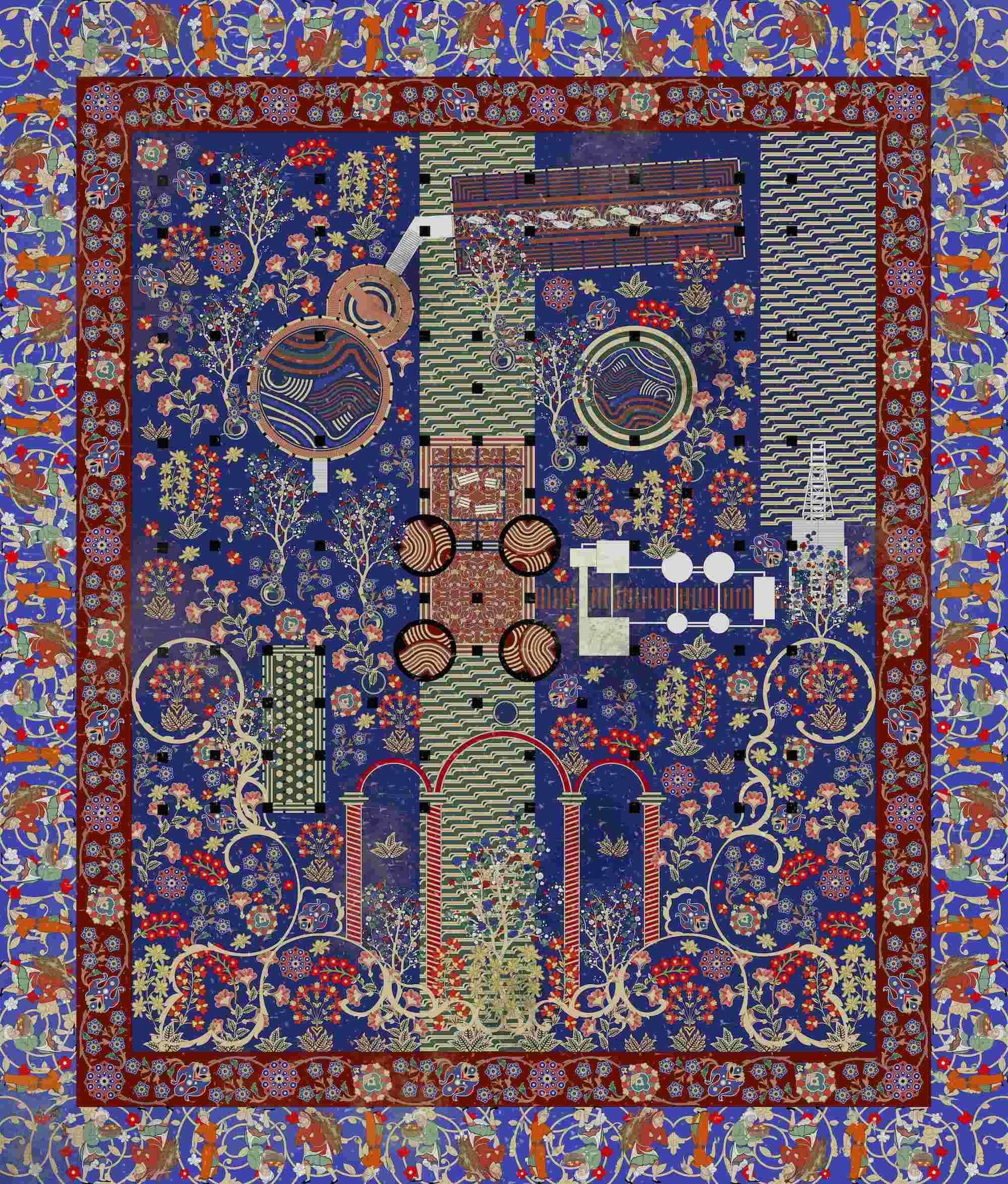Towards A Productive Insurgency: Architecture, Image and Community Identity in Arinjoy Sen's Digital Works
By Terrain.art | Nov 2 2021 · 6 min read
In a series of digital paintings, the artist reimagines the radical potential of image and architecture in the context of the politically turbulent valley of Kashmir.
An insurgency is a violent rebellion against the state power. The key feature of an insurgency is the asymmetric nature of the power struggle, with small, unorganized guerrilla forces of citizens facing the military might of the state.
For Kolkata-born, London-based artist Arinjoy Sen, the potential of insurgency lies not in confrontation but collaboration. In his works on the contested terrain of Kashmir, he does not imagine an armed insurgency as an answer to subvert state power. Rather, he imagines a “productive commons network,” through which the people of the region constantly “produce” and “reproduce” themselves to work towards a circular economy that is independent of state capitalism.
This network of commons also holds the promise of emancipation within and against the state system. Some of Sen’s works are currently on display in the exhibition Rituals of Time on Terrain.art, running till December 17.
The Contested Terrain of Kashmir: The Context
For those who don’t know about the current situation of Kashmir, here’s a lowdown: Kashmir is a beautiful, land-locked terrain lying on the lap of the Western Himalayas.
During the British period, the region was ruled by a Hindu monarch even though more than 70% of the population was Muslim. Since most of the population was Muslim, it was naturally thought that Kashmir would go to Pakistan during Partition. However, Kashmir decided to remain independent. Meanwhile, Pakistan launched a guerrilla onslaught to threaten its ruler into submission. The Maharaja then turned to the outgoing governor-general for help, who agreed on the condition that Kashmir accedes to India. When the Maharaja agreed, Indian troops entered the territory and managed to drive Pakistani-sponsored irregulars from most of the territory save one.
The UN was then invited to intervene. The international body asked for a referendum on the people of Kashmir, but India insisted that a referendum cannot take place until all the guerrilla fighters have withdrawn from Kashmir’s soil. The informal line of control held by the two sides became the international boundary. From the late 1980s onwards, the seething anger of the Kashmiris turned to a full-fledged insurgency, fuelled to a great extent by Pakistan’s moral and military support of the mujahideens (freedom fighters). Today, Kashmir is one of the most heavily militarized zones in the world, with several factions in the region asking for either complete independence or accession to Pakistan. Years of bilateral talks between the Indian and Pakistani administrations have failed to yield any result.
For the common people of the region, however, years of armed conflict in the state have led to a sharp decline in the regional economy, with handicraft and tourism industries (two of the main sources of livelihood) in shambles. The promised referendum remains a distant dream.
The Productive Insurgency of the People
Arinjoy Sen envisions an alternative imagination.
Sen proposes a productive network of commons as a means for subverting state control. In a commons-based production model, people work collaboratively towards a common goal and live under less-rigid hierarchical structures. In Sen’s project, the productive landscape of commons occurs at three intersections:
- The conceptualisation and development of an autonomous framework to produce a productive commons network as a form of emancipation.
- The construction of community identity of a people based on their rights of self-determination.
- The production of architecture through the production of images, in which the image is imagined as the incubator of the intersection of social, cultural, and political processes.
The Building and the Image
These three ideas take shape visually in several digital works which follow the visual grammar of a narrative painting but are suffused with deep symbolic meanings with radical political potential.
In his digital paintings On the Margins of Utopia and Towards a New Grammar, we see the construction of a building in progress. We see local people wearing colourful costumes bringing in construction material, tying ropes and building roofs. The paintings distinctly bear the mark of the narrative art style of Mughal courtly paintings. But here, the stories are not that of kings and queens but of the resilience of common Kashmiri folks engaged in the collaborative work of constructing a building. The act of building facilitates a circular economy that leverages local artisanal skills and resources and assumes the role of an alternative apparatus to the state system on which the people are heavily dependent for sustenance.
Sen also uses painting as an evolving artefact – a document that constantly changes with the development of the building. It serves as a metaphor for a building coming into form and, likewise, a community coming into maturity. In Sen’s vision, the architecture depicted in the images is not just the built environment in which people live. Instead, it is the embodiment of the values, ideas, relationships, and ideologies of the people who live there. The material reality of the image and that of its subject become inseparable.
The beguiling beauty of Arinjoy Sen’s work is a sad reminder of the tragedy of one of the most beautiful places on earth. But it is also full of optimism and the promise of a better future for the people of Kashmir.
Don’t miss Sen’s digital exhibition on Terrain.art.

